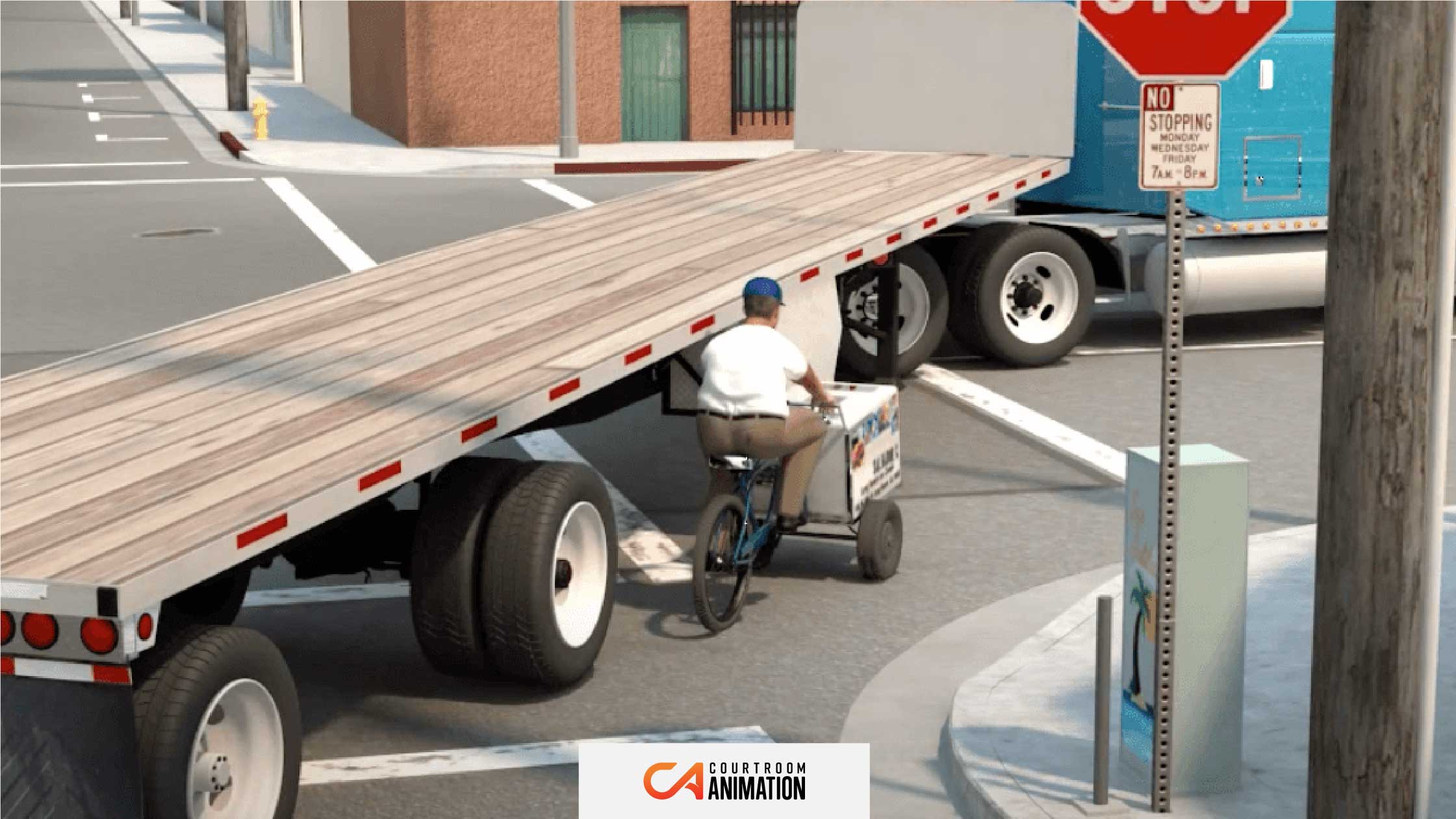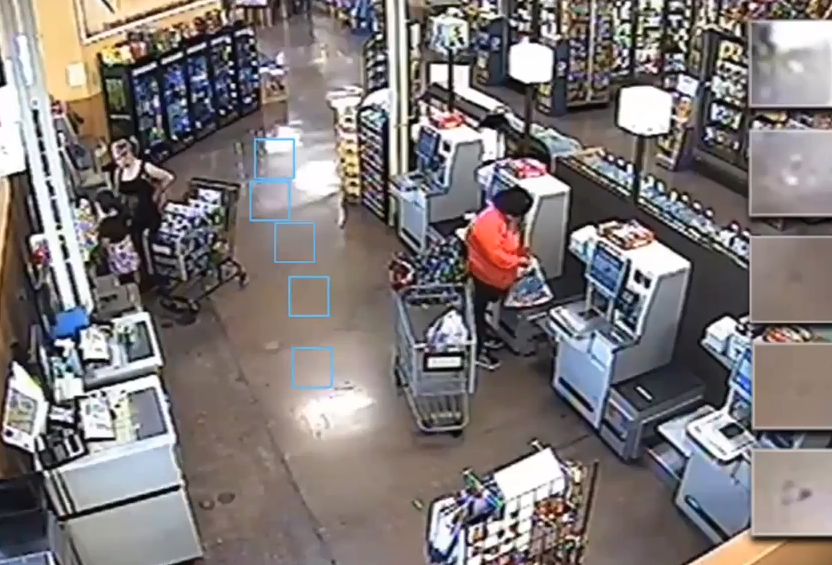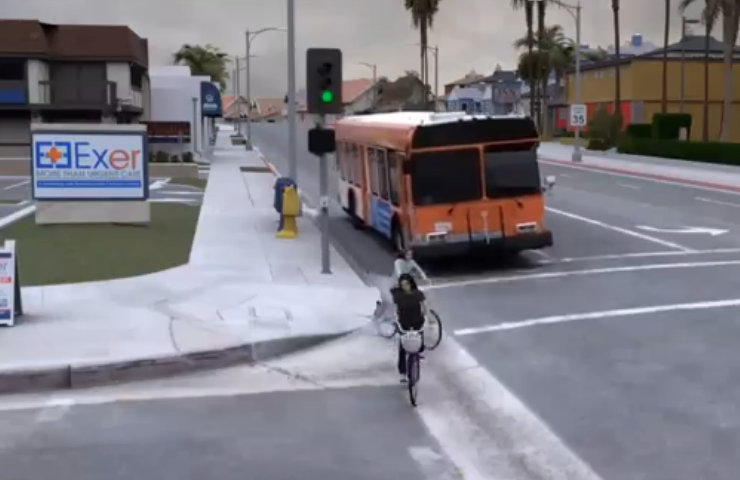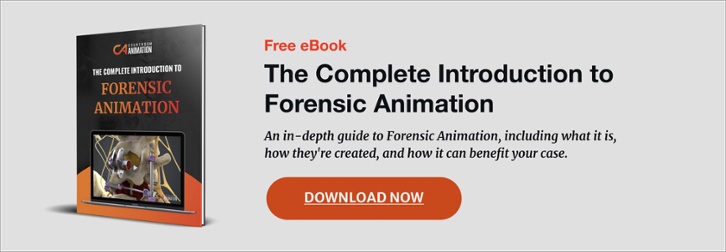
The use of digital evidence has increased in the past few decades, so it’s important to stay up to date on the latest legal technology methods. One of these methods is creating forensic computer animation from video evidence. Video evidence can originate from:
- Security cameras
- Traffic and toll-booth cameras, including red-light cameras
- Law enforcement cameras
- Phone recordings
- And more
In any courtroom case, the goal is to present the facts in the best way to explain a narrative. You typically present a combination of witness testimony, photos, and other independent pieces to explain a story. But with video evidence, your case is given a stronger foundation. Video can help explain or clarify exact location, time, number of people involved, and more. However, it’s still surface-level analysis.
You can still get more out of it and create stronger exhibits out of video evidence. Especially if you have poor camera data, such as poor quality, shaky recording, or far away action, forensic computer animation can be beneficial.
Let’s go over some of the ways animation can help improve or expand upon your video evidence.
Video Enhancement
Unlike the movies or television shows, we can’t simply look at some footage, zoom in on what we want to see, and enhance the quality. The quality is what it is. You can’t create something from nothing if the detail isn’t there. So what is video enhancement?
You can’t make a video higher resolution, but you can reveal what is already there and show it in a more digestible way. To understand this better, take a look at this image from a store camera:

The image in this video shows the scene right before a woman slips and falls in a grocery store. Prior to this point in the video, an employee is walking with a soda in her hand. The video isn’t clear enough to show the employee spilling the drink.
But when we enhance the video on areas of the floor before and after the employee walks by, we can see spots appear on the floor. And it’s on one of those exact spots the woman slips and falls. So as you can see, the quality of the video wasn’t improved. We just revealed key pieces that were already there so the audience can better understand what happened.
Video Recreation
Recreation is one of the most powerful types of exhibits that can be created from surveillance video. Unfortunately, the perfect video rarely exists that shows the perfect angles of how an incident took place. In these situations, video recreation is the next best thing. It allows us to re-contextualize the scene from a new perspective. We can take this unfortunate case of a bike rider getting ran over by a school bus, for example:

The video that our team had to work with was from a surveillance camera across the street on the right side of this image. By recreating the scene with forensic computer animation, we’re able to show what happened from several different angles.
This angle, in particular, clearly shows how the girl in the light shirt doesn’t follow her friend who’s going with the green light. Instead, she veers towards the bus, which ensures that the jury can fully understand how this incident unfolded.
Because our recreation animations are based on facts and science, they have a 99% admissibility rate.
Different Perspectives
With video evidence, there are often elements that are hard for jurors to watch or have emotional components that can cloud their judgment. As forensic computer animators, we want to take out any feelings so that viewers only see the facts. Forensic animation allows us to reduce implicit biases, such as around race or even with gruesome elements, such as the girl getting hit by the school bus. Here’s another example:

This image shows the perspective of a getaway driver who’s fleeing the scene of a crime. In this case, the officers shot at the driver as he was fleeing. By offering an alternative perspective, this graphic shows viewers that the driver had nowhere else to drive but through the group of officers, which is why they fired shots.
To help remove potential biases from the jury, our team took the race component away by depicting everyone in solid gray. This can help jurors or other viewers decide who is or isn’t at fault based solely on facts.
Video Analysis
In the forensic computer animation world, “analysis” essentially means taking measurements. That can be distance, speed, the proximity of one object to another, time (how quickly or slowly something happened), etc. The goal is to take all these measurements and present them so that jurors and others can easily understand the analysis. Here’s a good example of one of the cases our animators worked on:

At the top of the image, you can see the real footage of the surveillance camera that caught this scene. This camera, in particular, provided high-quality video. However, the action taking place is far away and happened over a 20-minute period. For anyone watching, it’s difficult to understand what happened in one viewing.
But with this graphic that follows the assailant’s movements from above, viewers can get a better idea of space, timing, and proximity. We were able to create this exhibit by using Google Earth and adding elements to make it more digestible for viewers.
Getting Video Exhibits Admitted to Trial
This analysis and enhancement work is highly admissible in almost all cases. That’s because there is nothing new added. Instead, it’s recontextualizing the incident by taking freeze frames, stopping, slowing down, or speeding up the video.
Recreation, and showing things from different perspectives, can also be brought into trial because the science and foundation are solid. This, coupled with an expert witness that can back each data point of an exhibit, can profoundly strengthen your case. When Courtroom Animation creates a recreation from video evidence, every piece of input data used is backed by an expert who can speak to its authenticity. From laser scans, total stations, and diagrams, we are able to create compelling visuals that strengthen expert testimony.
Overall, forensic computer animation can help your case by:
- Analyzing the incident so relevant parties can understand spacing, timing, etc.
- Enhancing key points in a video to point out any missing information.
- Recreating a video from a different angle to provide a new perspective.
- Using different perspectives to remove potential bias.
You can use an animation created from your video evidence at any time during the trial, or during mediation. Since the data is already in the video evidence, it has a high chance of being admissible for when you need to show it.
The Bottom Line of Forensic Computer Animation
With legal parties using digital evidence more and more in recent years, it’s beneficial for attorneys to understand how an animation is created. It’s also helpful to know the ins and outs of a video recreation’s techniques in case the opposing party uses it in court. And, as humans are visual learners, animation is one of the most effective ways to support your case, whether you are part of the defendant or plaintiff party.
Can forensic computer animation help your video evidence? Get your quote today and one of our case specialists will contact you to discuss the specifics of your case.

Topics: